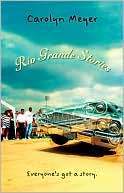Confidential to Teachers
MAKING HISTORY COME ALIVE
One way to inspire students to read, write, and think about history in a new way is to introduce them to an interesting historical person and have them research the background before creating a story.
KEY: Start students off with a provocative quote.
Example: "Let them eat cake." --Marie Antoinette
The French queen supposedly said that, although in fact she didn't, but it's a good way to begin looking at the French Revolution while investigating these questions: Where did she come from? Who was her family? What was her name originally? Whom did she marry? Why did she marry him? What was her life like after her marriage? How did she dress? How was her life different from ordinary French people? What did "cake" actually mean? (It's not what we mean by it.)
Example: "We are not amused." --Queen Victoria
Maybe another misquote; stories differ, but knowing about Victoria offers a new way to introduce life in 19th century England. Who were her parents? What was her childhood like? Who was her best friend and her worst enemy? What about her mother? What about her weight problem? How did Victoria become queen? Whom did she marry? And why that prince? What was life like in "Victorian England"? Was she really a stuffy, dour woman?
Example: "You care for nothing but shooting and rat-catching, and you will be a disgrace to yourself and all your family!" --Charles Darwin's father
One of the world's most famous scientists was considered a loser as a teenager. Where did he grow up? Where did he go to school? What did he enjoy and what did he detest doing? Did he learn to get along with his disapproving father? Darwin went on a 5-year journey around the world that changed his life--and was seasick most of the time.
Yes, I do school visits! I'd be delighted to come to your school and talk to groups of students from 5th grade up. I explain where I get my ideas, explain how I do research, and talk about the writing (and RE-writing) process, often invoking the image of my high school nemesis, Miss Frankenberry, The Grammar Dragon.
I answer questions about getting started, getting published and even the embarrassing ones, like "How much money do you make?" In a one-day visit I'll do three major presentations (group size doesn't matter), sign books, meet informally with a small group of students, have lunch with teachers. Tell me what you need.
Fee: $750 per day, plus expenses; negotiable in New Mexico. To get your money's worth, students must know something about my books. I'll fill in the rest!
Questions? Contact me: meyerwrite@comcast.net

RIO GRANDE STORIES
(Publishers Weekly review)
Meyer imaginatively explores multicultural aspects of the American Southwest in this rich collection of linked short stories. As part of a fund-raising project, a class of 15 students attending a "magnet" school in Albuquerque decides to write and sell a volume of personal essays about life in New Mexico, past and present; each chapter here focuses on a different member of the class. The students are ethnically diverse--Native American, Hispanic, African American and Anglo--and their experiences while researching the essays prove to be as wide-ranging as their chosen topics. Rosa Gonzales plans to recount the legend of La Llorona, the wailing woman, until a run-in with the lady apparition convinces Rosa to choose a "safer" subject. Native Americans Ricky Begay and Pauline Romero turn to relatives to provide information about traditional art forms of their tribes. Others dig deep into their own families' pasts to discuss religious practices or to chronicle their favorite heroes. The mixture of contemporary voices, engrossing histories and vibrant heritages is enlightening, and will be valued not only by the target audience but by older readers as well.
If you're using Rio Grande Stories in a language arts or social studies class,
click below for useful Curriculum Connections.
Curriculum Connections